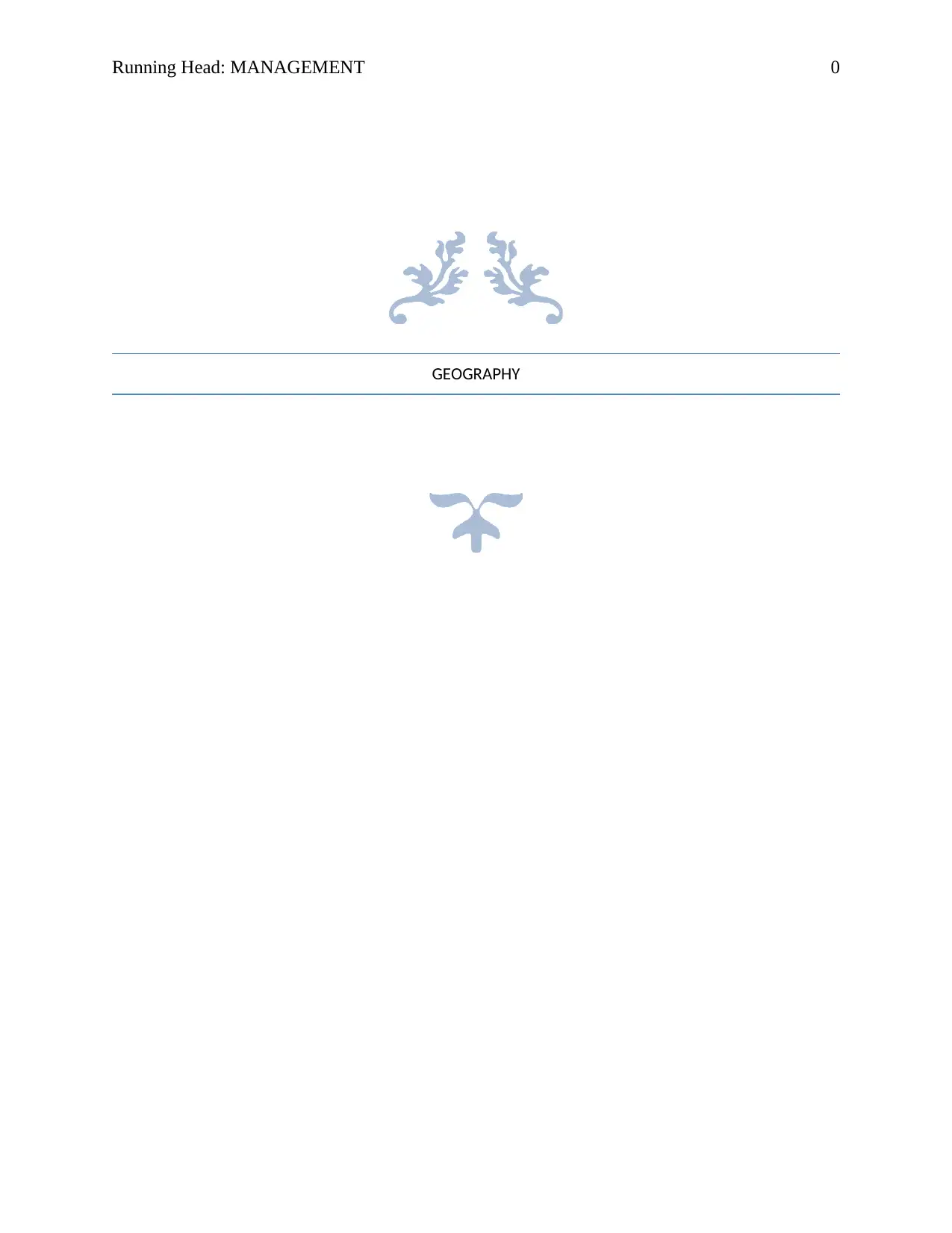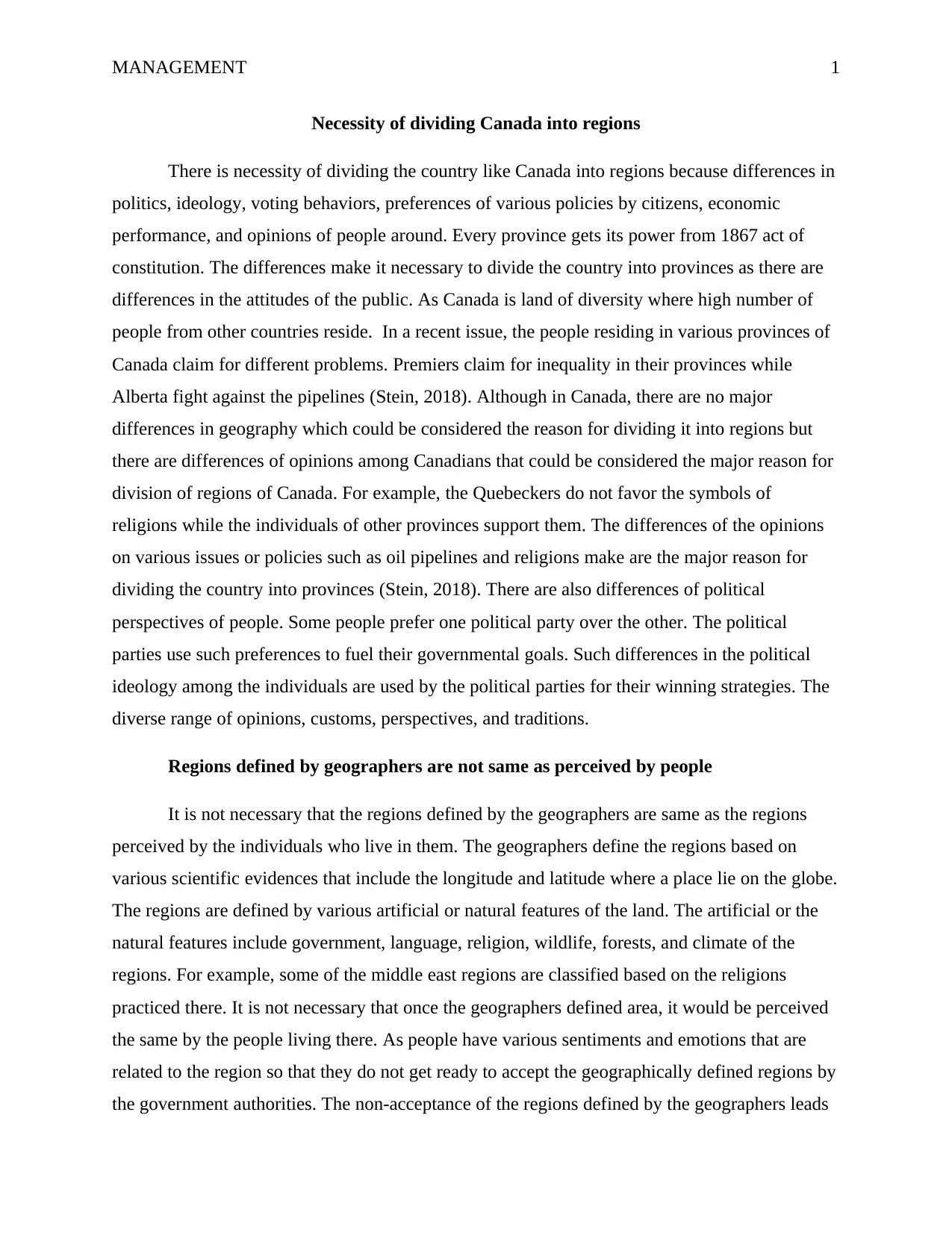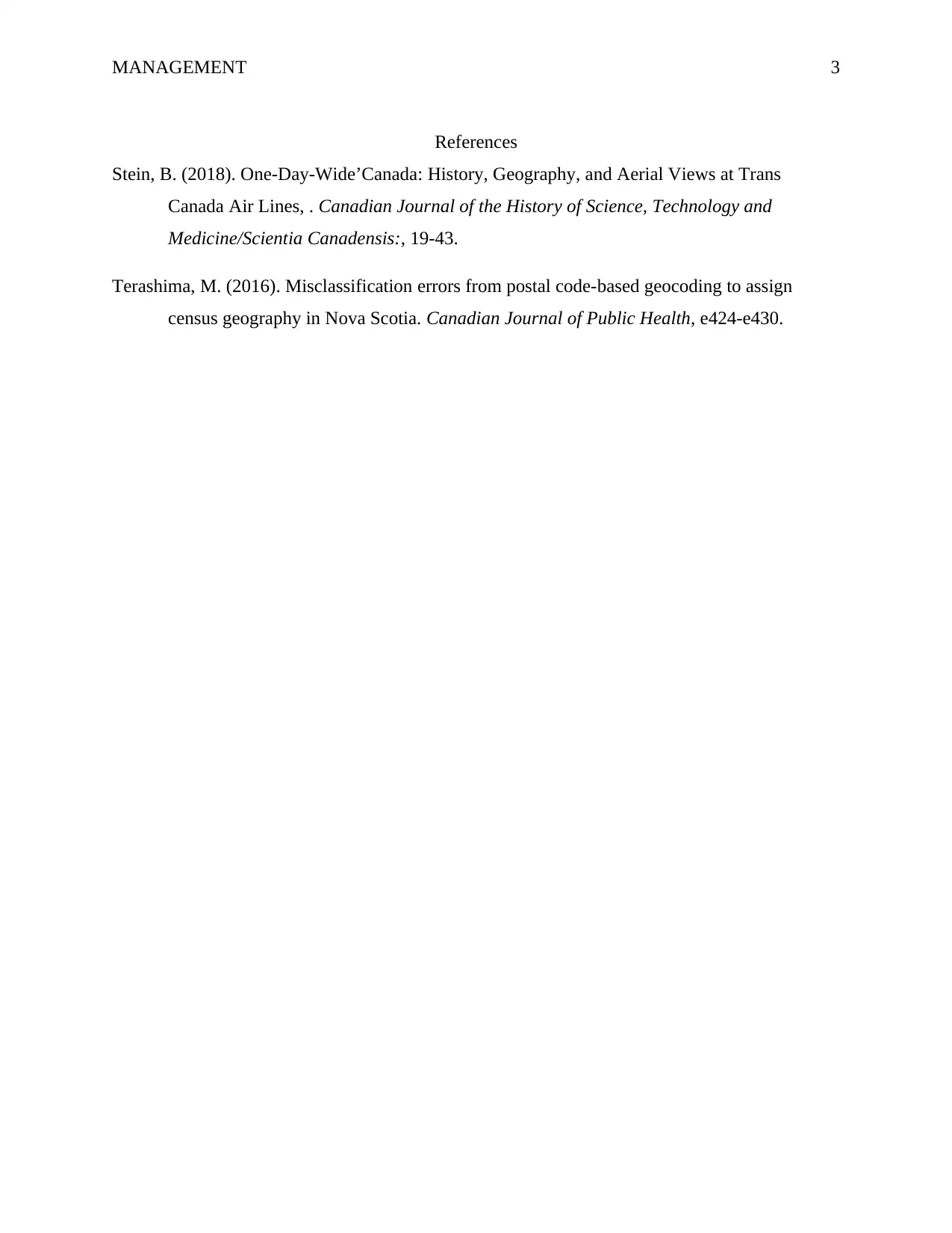Canada: Regional Divisions, Political Preferences, and Public Opinions
VerifiedAdded on 2022/10/06
|4
|593
|15
Report
AI Summary
The report analyzes the necessity of dividing Canada into regions, highlighting the influence of political ideologies, voting behaviors, and policy preferences. It emphasizes that differences in public opinion and political perspectives, such as those related to religious symbols and oil pipelines, are key drivers of these divisions. Furthermore, the report contrasts the geographer's view of regions, based on scientific and natural features, with the perspectives of the people living in these regions, who may have strong emotional attachments and sentiments. It uses examples to illustrate how these differing viewpoints can lead to clashes and disputes, using Canada as a case study to explore the complexities of regional identity and division.
1 out of 4










![[object Object]](/_next/static/media/star-bottom.7253800d.svg)